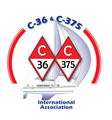To deal with possible fire in the engine box, you can a) install one of those little ports and keep a dedicated fire extinguisher at the ready or b) install a fire suppression system.
If the engine were on fire, I'm not sure how prepared I would be to rush below and shove a fire extinguisher into that little port. If the situation worsened, escape would have to be through the forward hatch probably. Also, as someone pointed out in an earlier post, the newly installed engine port will increase engine noise in the cabin.
I would prefer to spend the extra money and install a fire suppression system in the engine box. Unfortunately, I'm told that there just isn't room enough in the box.
I realize that the chances of an engine fire are slim, but I believe that my insurance people want one of the two options done.
What have you all done?
Thanks,
mrmac
Southern Comfort #1881
Tall rig, Wing Keel
Potomac River/Chesapeake Bay


When we purchased our MK II, the surveyor made a suggestion of installing a fire suppression system. I haven't given it much thought until reading your post. To wrestle the engine box cover removal- would consume valuable time, and you are correct- when removed, it pretty much means you have to exit through the front hatch.
The aft cabin has a small access door near the sole for oil filter access. Not a lot of room for insertion of a fire extinguisher and you only get access to one side of the engine. I would consider making another access panel above the oil change door and maybe an access point cut into the removable shelf (over the back of the engine) in the aft cabin. Cutting these openings would also give us means of extracting some engine heat on cool nights.
Of course to verify any of this would work, I would need to visit our boat which is surrounded by 5 foot snowdrifts.....
Paul & Wendy Keyser
"First Light"
Rye NH
2005 C36 MKII #2257
Wing, M35B
I bought one of the small ports and installed it on the stbd side of engine box. and hung a fire ext under the ladder..to reduce noise thru the port i wedged a round piece of soundproofing foam inside the port...this doesnt defeat the small port door,it falls out when the ext nozzle is inserted..To catch any engine fire early enough to react,i also installed an engine room high temp alarm..There was quite a list of these things to do for commercial compliance ..these were inexpensive
"Sailing Still" 1990 C36 M25 wing
Sail Canada/Transport Canada training
Gibsons Harbour BC
www.landsendbc.ca
greigwill - I think that your solution may be just what I want to do. Please talk about the "engine room temp alarm." How is it powered, how difficult is installation, what temperature activates the alarm, where did you get it, etc.? If you have pictures of any of this and it's not too much trouble, they might be helpful.
Thank you very much. This is probably overkill, but once it's mentioned in a survey, it stops being a matter of choice.
mrmac
Southern Comfort #1881
Tall rig, Wing Keel
Potomac River/Chesapeake Bay
Engine compartment fire alarm
Hope this works for you MRMAC...
Look at an Aqualarm fire detector kit. The manufacturer has indicated that the heat sensor portion of this kit is suitable for installation in an engine compartment. Look for product at your local chandlery or on the web by searching for "aqualarm fire warning kit". The product description is as follows:
Fire Alarm Panel size 1-3/4" x 3" The Remote Fire Detector (UL and ULC listed) and the Warning Panel included in the kit, monitors heat level and activates the red light on the Warning Panel and sounds a loud buzzer, built into the panel, when the temperature reaches 194°F or Rate of Rise is reached. Multiple Remote Fire Detectors can be wired in parallel on this boat fire alarm.
"Sailing Still" 1990 C36 M25 wing
Sail Canada/Transport Canada training
Gibsons Harbour BC
www.landsendbc.ca